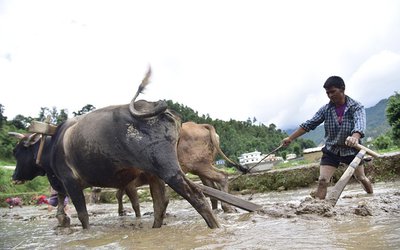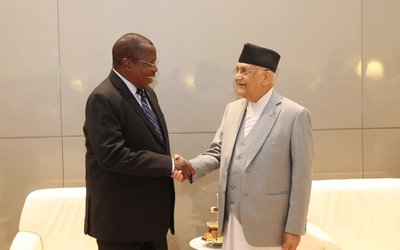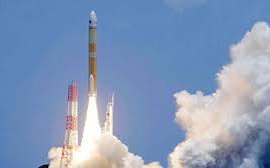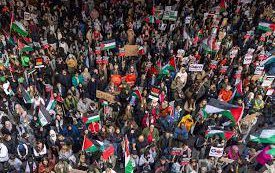More on National






As predicted by Nepal Electricity Authority’s ‘A Year in Review’ for Fiscal Year 2011-2012, the coming winter will see more severe power shortage than the last year. It has predicted that the next year’s summer will have more hours of load shedding than this year’s.
The current forecast has shown that Nepal’s acute power shortage will continue for a long time to come as the demand of electricity is rising in all the seasons and there is a major project to fill the gap. Given the current power project development and high prices in exporting power, it will be very difficult for the country to maintain electricity supply.
According to a study, Nepal is facing an acute power shortage with a deficit of above 500 MW in the power system. Added to it, there is much shortage of power/energy even during the wet season. It is expected that Nepal will be facing severe energy crisis for another 10 years. In that context, what is required now is to put the best efforts towards the generation of additional power.
“NEA’s current huge shortfall of supply over demand cannot be removed outright and it is bound to remain there for the next 3-4 years. For the intervening period, some measures will be pursued to restrict the number of load shedding hours to 12-14 per day per consumer during the dry session,” writes Mahendra Lal Shrestha, acting managing director of NEA.
As the country’s power demand is growing, the government is adding new power generation station; Trishuli 3A is being developed looking at the power demand in the country.
According to NEA annual report 2012, the annual power demand of the integrated power system (INPS) in fiscal year 2011/2012 is estimated to be 1026.65 MW with 448 MW power actually supplied. NEA contributed 349.71 MW by hydro and 5.3 MW by NEA thermal, 102.2 MW by IPP hydro and the rest 121.44 MW by was import.
Compared to the preceding fiscal year’s figure of 946.1 MW, the annual peak power demand of the INPs registered growth rate of 8.5 percent. As there is estimated demand of 5,194.78 GWh, out of which only 4,178.63 (80.4 percent) could be supplied, the rest 1016.15 GWh (19.6 percent) was restored to load shedding.
Given the current demand of electricity, there will be at least 6 to 7 hours load shedding even during rainy session in coming years.
In this scenario, the augmentation of Trishuli 3A from 60 to 90 MW will be a boon to improve the power supply situation in the country.
“It is of utmost importance for the government to intervene and take concrete steps towards upgrading the installed capacity of Trishuli 3A and kick off other projects at the earliest. Irrespective of government declaring power crisis in March 2011, no tangible initiative has been taken towards correcting the gap in the power sector. Augmentation of Trishuli 3 A project will be the first work of its kind.
Background of Trishuli 3A Hydro Electric Project (60 MW)
The project is being implemented by NEA with concessional loan for the first time from China Exim Bank amounting 120 Million USD (for power generation, transmission, etc). The present plant capacity of Trishuli is 60 MW, based on Q 70 design, which is not considered as an optimized one. The bid was submitted in February 2009 and the contractor received the commencement letter only on June 2011, i.e., upon loan being effective. Currently, the detailed project design is under process.
“In view of the government’s declaration of the power crisis, adopting the policy to upgrade the capacity of existing plant based on Q40 design flow and to optimize the available resources of Trishuli, the contractor explored the possibility of optimizing Trishuli 3A and submitted its proposal on 23rd March, 2011 for augmentation of the existing capacity of project to 90 MW. This augmentation will stand out to be a better option because the plant of 90 MW capacities in Q 52 will be able to best to harness the energy available in the Trishuli river,” experts argue.
Further, the augmentation of this project will also enhance the capacity of the downstream project, Upper Trishuli 3B, from 37 MW to 55 MW. Thus the resource potential can be utilized in effective manner and will largely benefit NEA, the customers and country currently suffering from huge power deficit. This shall also fulfill the demand already raised by the local people.
“It is of utmost importance for NEA to undertake policy decision to revise the scope at the earliest possible so that the augmentation could be incorporated in the ongoing design process. For the same, negotiation with the EPC contractor has to be initiated at the earliest,” said an expert.
The benefits
If the project is augmented, Nepal’s power system will have 30 MW of installed capacity added. This will contribute in minimizing the widening gap between the demand and supply scenario of the country. As the project site is near the load center, i.e. Kathmandu Valley, the additional energy can be evacuated to KTM with minimal loss. If Nepal has surplus power, this 30 MW power also can be exported.
Increase in the level of energy generation: With the current design based upon Q70, it has been observed that the available water in the river is not fully utilized. After the proposed augmentation with Q52, a total of about 148 GWh (148 million units) of additional energy will be available in the system annually. This is a considerable amount of energy. Further, this will enhance the dry season energy by about 8.5 GWh. In the current situation of acute energy deficit this will be very important.
Optimization of the water resources: In the existing 60 MW configuration, there is a surplus of water being wasted during April to December. The same can be effectively harnessed provided the plant is upgraded to 90 MW making local population happy thereby mitigating the project from local obstruction.
Technical
Experts believe that there is no need for modification/augmentation to the head works and transmission lines. Modifications to intake, tunnel, powerhouse and generating equipment only are required.
“This means, little modifications in the current design (for 60MW to 90 MW) would be sufficient for the upgrade,” said an expert.
Producing 30 MW additional power is not an easy task and importing such bulk power is another difficulty task given power shortfall in Nepal’s neighbor India. No matter what benefit, however, the process is going on to sabotage the project. In his article in Kantipur, columnist Gokarna Awasthi (October 9,2012), writes there is no reason to push this project ahead when even Nepali Congress leader Dr. Ram Sharan Mahat, Maoist leader and minister for Tourism Post Bahadur Bogati and former water resources minister Gokarna Bist opposed it.
If the project’s capacity is increased by 30 MW of power by just investing a little amount of money, there is nothing wrong. However, invisible forces have been trying to sabotage the augmentation as undermining the national interest.
“There is no reason to oppose the project because the project is technically and financially viable for Nepal. At a time when the country has been facing acute power shortage, Nepal has no option other than to start the project and if possible there is the need to work to increase the capacity,” said Bikash Thapa, Editor of Urja monthly, who has been writing on energy issue for quite a long time in his interview with Mountain Television.
Project Period
In the current socio-economic situation of Nepal and as experienced so far, an independent project of 30 MW takes around 4 1/2 -5 years to generate and transmit power (for e.g. Chamelia 30MW Hydro Power Project,) apart from about 3-4 years duration for project identification, engineering and feasibility studies. The additional 30 MW for Trishuli 3A can be generated within a time period of additional 6 months only. Further, head works in the augmented plant capacity 90 MW will remain the same while some modification will be required only in waterways, intake, powerhouse and generating equipment. This signifies that augmentation will not cause much delay.
Financial
The contracted price for 60MW capacity is US$ 89.18. The price offered by the contractor for the total capacity of 90 MW is US$133.77. With this offer it is observed that the additional 30 MW will be developed at a price much lower than what would be required for an independent project of same capacity. The incremental cost per KW associated with the augmentation is about US$ 1486.3 per kW and Incremental Energy cost stands at Rs 2.68. These are much lower than the current rates.
The cost associated with the design modifications and equipment will, however, be not proportional as compared to the negotiated and contracted price for 60 MW. This is attributed to the price escalation over the period of time.
Benefit to NEA system: Supply of additional energy in wet season can reduce the burden of Kulekhani. This saving of energy of Kulekhani during wet season can be used during the dry season. This will result in lowering the energy imports from India thus reducing our outflow of foreign currency. This further reduces the dry season power shortage. This will make NEA power system operation more flexible, reliable and profitable.
Operating maintenance: Operating condition of 3 sets of generating unit is always better than that of 2. If 2 sets of generating unit as with case of 60 MW is taken, even the least river discharge in dry season is more than the capacity needed by 1 set of generating unit under full load operation (30MW). This will lead to wastage of the available water discharge when 1 set of generating unit is under examination and repair maintenance. This would cause adverse affect on the generated energy during the dry season. If the examination and maintenance is done in wet season, then the loss of generated energy is more than that in the dry season. Thus, the plant with 3 units will enhance the operational flexibility and reliability.
The per unit cost of hydropower developed by NEA in past is observed to be higher than both the incremental cost of additional 30 MW or the cost of project at 90 MW.
As the study has shown that Augmentation of Trishuli- 3 A project is viable in terms of technical and financial basis, the government needs to take the decision looking at the broader interest of the country. “Augmentation of Trishuli -3 A project will benefit the nation for the short term and longer term. This is what I am looking for,” said Hareram Koirala, secretary of Ministry of Energy and chairman of Nepal Electricity Authority. “Technically, this is a very suitable project to augment.”
At a time when no project is in the NEA’s pipeline, a plan with additional 30 MW power generation plant with NEA means a lot of things. In case of additional power, it can export it to India also because the India’s power demand goes high during the summer.
Project Comparison
Project Name Installed Capacity (In MW) Cost/KW (Installed Capacity)
Trishuli-3A (for incremental capacity) 30 US$1,486
Kali-Gandaki 144 US$ 2,411
Middle Marshyangdi 70 US$ 4,960
Chameliya 30(as projected cost of completion) US$ 5,092
NEA has done PPA and purchasing power from sources mentioned below at the respective prices:
Himal Hydropower (Khimti): NRs. 9.78
Bhotekoshi: NRs. 8.50
Private Developers: NRs 4.80 (up to Q 40)
Upper Tamakoshi: NRs. 4.06 (Q 32)
Import from PTC, India: Approx. NRs. 10.40









